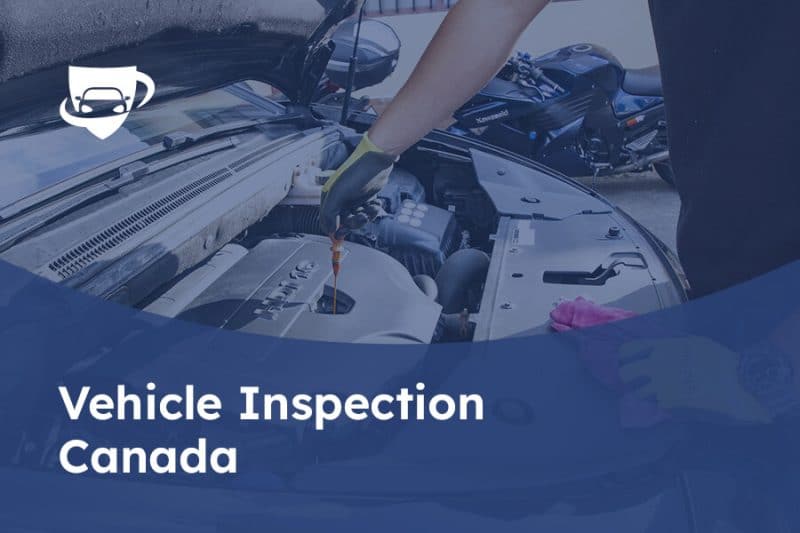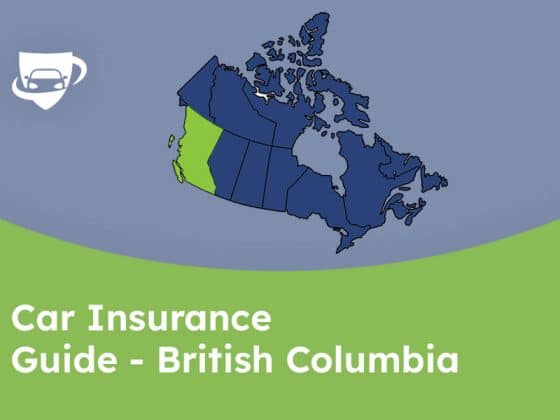At this point in time, most people can agree that driving represents one of the most dangerous activities that we carry out on a daily basis. While the dangers associated with driving are generally related to respecting traffic laws and the actual skill of drivers, it has often been proven that vehicles that are properly maintained and inspected from a technical standpoint are less likely to be involved in road accidents.
Apart from the safety aspect associated with vehicle inspection, we must mention that numerous countries have enacted laws meant to make inspections mandatory, both when registering a second-hand car, but also every once in a while, to ensure that all safety requirements are met.
Based on these aspects, this article is meant to highlight the main aspects worth keeping in mind for Canadians when it is time to carry out car inspections.
Some of the main topics that we will discuss include the regulations associated with auto inspection, why it is needed, how inspections are conducted for salvaged vehicles, and what mechanics usually look for when conducting the aforementioned inspection.
Why Do You Need Vehicle Inspection?
Here are the main reasons explaining why auto inspection is mandatory, and why you should do your best to ensure that your newly purchased or existing vehicles go through these checks periodically.
Regulatory requirements
To kick things off, it is important to mention that regulations regarding car safety testing tend to vary throughout Canadian provinces — therefore, for the exact information applicable to your specific case, it is best to check the local vehicle safety inspection guidelines.
For instance, a new or used car that is purchased in Ontario, Labrador, Newfoundland, and Manitoba can only be registered after the successful completion of a safety check. In general, car dealerships take care of this aspect when it comes down to purchasing a new car since they are required to do so by law. On the other hand, private sellers for used cars are not, but are free to do so. So, when purchasing a second-hand car, buyers generally have to carry out a safety inspection at one of the motor vehicle inspection stations throughout the country.
Other provinces, such as the Prince Edward Island or New Brunswick, have enacted laws meant to require vehicle drivers to have their cars inspected for safety on a yearly basis. The same regulation is applicable in Nova Scotia, yet the difference here is that the inspection must be carried out once every two years.
However, there are also provinces with more lenient regulations, such as Alberta, British Columbia, Quebec, and some of the northern territories. So, in the case of Alberta, a vehicle inspection is not required for passenger vehicles.
There is, however, an exception that applies for cars that have been imported from other jurisdictions, as well as for commercial cars. The laws regarding inspections for vehicles coming from other jurisdictions make sense, granted the lack of standardization on what is considered safe.
Rest assured that there are numerous service centres specialized in this type of operations throughout Canada, yet as you may expect, standards vary here as well. For instance, an out of province inspection in Edmonton will be different from the one in Calgary. Last but not least, regular inspection is also required for insurance purposes.
Detecting technical problems and ensuring peace of mind
Here, we want to emphasize an essential aspect, applicable to drivers throughout the world. Carrying out a periodical auto inspection ensures peace of mind when driving since car owners can rest assured that their vehicles have no technical issues that are bound to cause problems in the short- and long-term.
Therefore, a vehicle inspection carried out by a mechanic generally tests all the systems of a car, such as its mechanical and electrical parts, as well as its overall structural integrity. As such, all technical problems can be diagnosed and fixed, making sure that your vehicle meets safety guidelines and does not pose a danger to you, or other drivers.
This aspect is especially relevant in the case of Uber vehicle inspection, as regulations indicate that you are also responsible for the safety of other people inside your vehicle as well.
Passing emission tests
Some provinces have opted for regular emission tests, to help protect the environment, by prohibiting the roadworthiness of cars that are dealing with emission-related challenges. This is also one of the main reasons why you can find numerous Canadian tire and emission test services.
In numerous regions, having high emissions that do not fit within the accepted standards can lead to higher taxes, or the need to stop using the respective vehicle. This aspect is relevant for both normal passenger cars, but also for commercial vehicles, as Canadian regulations point out.
The next part of the article will focus on the actual technical inspection, carried out by specialized mechanics.
General Car Inspection by a Mechanic
Without further ado, here are the details explaining the main systems that are checked as part of most auto inspection procedures worldwide.
Brakes
Well-functioning brakes are necessary for the safety of all cars and should be regularly checked to ensure that vehicles are capable of stopping on time. Generally, brakes come in the form of discs and drums, and both systems need periodic checks and changes seeing how they do not last forever. All registrars of imported vehicles require technical brake checks.
Suspension
When checking the suspension system, mechanics generally scan for irregularities in components, such as the shock absorbers, struts or tires.
Steering
The well-being of the steering system is essential for comfort when driving, but also for road safety. As such, mechanics generally look for irregularities in the steering gearbox, steering arm, steering pump (including fluid), and more. This happens at most service centres, including all Ontario motor vehicle inspection station locations.
Hoses and belts
These parts help ensure that the engine, air conditioning, and battery charging systems all work as designed. Checks are therefore essential to ensure that all hoses and belts are tied, and work properly.
The emission system
As mentioned above, emissions are regulated in their own category, which explains why checking the emission system is so important. Therefore, this system is responsible for ensuring that the vehicle’s engine runs efficiently, without producing too much emission.
Some of the main components that are checked include the oxygen sensor, EGR valves, throttle position sensors, catalytic converter, and more. Any irregularities should be fixed as soon as possible to ensure the passing of your local car inspection in Calgary, for instance, as well as other regions.
Exhaust system
This system is linked to the emission components and is responsible for making sure that exhaust gases are evacuated correctly, away from the car’s cabin, via the pipes. Some of the main components which are checked in this case include the tailpipe, catalytic converter, muffler, and exhaust manifold.
Failures present in the exhaust system can lead to health hazards for the car’s occupants, alongside higher rates of pollution, as indicated by the BC vehicle inspection guidelines.
Engine cooling system
This system is solely responsible for removing excessive amounts of heat from both the transmission and the car’s engine. It works via coolant which is distributed via the car’s water pump and monitored/regulated by an integrated thermostat.
The well-being of this system ensures that the vehicle does not overheat, while also powering other systems such as air conditioning, heating, and defrosting, all of which are essential for driveability, according to the guidelines published by vehicle inspection in Edmonton, at least.
Lights
Failure of the lights system does not make a car unusable, but it does make it unworthy for driving on public roads, granted that lights are an essential safety feature present on all cars. Therefore, mechanics will go ahead and check whether all lights function correctly, and replace any bulbs which have become obsolete.
Transmission
No modern car works without its transmission system, regardless of whether it is a manual or automatic vehicle. The transmission is required to power the wheels, and its failure can deem a vehicle unusable. As such, when carrying out vehicle inspection, mechanics check the clutch, planetary gear sets, seals, torque convertors, modulators, and regulators to ensure the technical well-being of this system.
The electric system
Most cars cannot function without their electrical systems. The car’s battery represents the only source of electricity, meant to help turn on the vehicle, while also ensuring that essential features based on electricity work accordingly. Hence, inspectors will check the car’s battery, alternator, cables, voltage regulator, fuses, and more.
Tires
Canadian tire regulations mandate that all vehicle tires are in good condition, to help ensure roadside safety. To put things into perspective, tires are directly responsible for the grip that a vehicle gets when driving. With this in mind, worn-out tires can lead to a variety of problems, including increased breaking times, loss of grip, skidding, and the inability to drive on certain terrains.
This represents the main reason why Canadian tire car inspection is taken so seriously at all technical inspections for vehicles. Luckily, tires can be checked both by mechanics and by yourself.
Generally, when checking the condition of your tires, you want to verify the tire pressure first, to ensure that they are properly inflated. This is done via a pressure gauge. Luckily, most modern vehicles feature sensors meant to alert drivers when tires are no longer inflated as designed.
Therefore, there is no need to contact a Canadian tire auto centre for this purpose. The second aspect worth keeping an eye on is to check the tread depth. This is meant to ensure that proper grip can be obtained while the car is driving. To do this, simply take a look at the tread depth — if it seems too low, take your car to a service centre, where the depth will be professionally measured, thus helping you decide whether it is time for a tire replacement.
Keep in mind that the Canadian tire safety test is taken seriously, therefore always keep a close eye on your tires. A final tip on this matter is to perform visual checks to help spot scrapes, cracks, bumps and punctures.
Based on everything that has been outlined thus far, numerous technical checks are performed to determine whether your vehicle is dealing with difficulties. Unfortunately, many people tend to avoid these checks given the costs, but we can all agree on the fact that the price of general inspections, alongside the Canadian tire vehicle inspection cost, is considerably lower when compared to the disadvantages of driving an unsafe vehicle.
Many new cars have technical inspections like these included as part of their warranty — if you are unsure, simply contact your dealership to determine whether you have to pay any money for these inspections. Even if the check entails a cost, it is generally low, especially if no repairs are required.
AWN Auto Parts
Free Shipping On All orders over $1OO auto parts and accessories
Car Safety Inspection for Imported Vehicles
According to the Registrar of Imported Vehicles, inspections are mandatory for all vehicles that are imported from other jurisdictions, as we have mentioned earlier on. The guidelines are simple — it is the responsibility of the importer to ensure that the inspection is carried out within 45 days for normal cars, and within 1 year for salvaged vehicles.
Choosing to not carry out the RIV inspection will make the vehicle in question non-compliant with regulations, and unworthy to drive on public roads.
Do keep in mind the fact that an appointment is necessary to carry out this inspection. Details on how to prepare your vehicle and on how to make a booking are available on the official website of the Canadian Registrar of Imported Vehicles. Numerous solutions are offered to car owners, including out of province inspection in Calgary or cost estimates.
Contacting the Canadian Registrar of Imported Vehicles will also yield you more information on the technical guidelines that imported vehicles must respect, to ensure that their roadworthiness in Canada. Similarly, for those who are interested in tire inspections, it is important to keep in mind that the bureau can also assist with relevant data concerning the safety standards certificate and cost for Canadian tires.
Salvage Vehicles Inspection
Before anything else, we must define salvaged vehicles. According to the Alberta authority for salvage car inspections, a salvaged car represents a previously-damaged vehicle that can be rebuilt.
Therefore, the purpose of this inspection is to ensure that rebuilt cars respect all technical and performance standards that must be attained to ensure the right to be driven on public Canadian roads, as mentioned by the authority for salvage cars in Ontario.
Vehicles which are deemed as non-repairable are declared obsolete — therefore, no certificate for registration will be released. In cases like this, vehicles can be dismantled for removing mechanical and electrical parts that still function.
At this time, there are numerous salvage inspection authorities throughout Canada. With this in mind, a quick web search can yield results for all provinces, including salvage inspection in Calgary.
Bottom Line
Canada registered more than 1.5 million new motor vehicles in 2020. We hope that this knowledge page will help readers learn more about the procedures that are generally associated with auto inspection throughout Canada, while also encouraging more people to carry out regular inspections. Failure to do so is not only illegal in most provinces, but also leads to considerable risk for the car’s inhabitants and other drivers.
By keeping everything that has been outlined thus far in mind, readers can expect a positive experience.
People Also Ask
Standard safety inspections generally cost around $100, although the actual price tends to vary, depending on the service centre of choice.
However, if reparations are required, the costs are bound to be higher; the overall costs will largely depend on the parts that need to be replaced. Moreover, an unfortunate aspect worth pointing out is that there is no longer a car inspection cost cap imposed by the government.
The main systems that are checked as part of regular car inspections include, but are not limited to: the emissions system, brake system, fuel system, engine system, electrical system, exhaust system, engine cooling system, steering system, hoses, belts, and so on.
This depends solely on the region where your car is registered. However, from a non-regulatory, and strictly safety-based perspective, it is best to have your car inspected on a yearly basis.
A mechanic will go ahead and inspect all important parts of your vehicle. Make sure to let the mechanic know if you have noticed any irregularities or problems in how your car drives when taking part in an inspection procedure.




